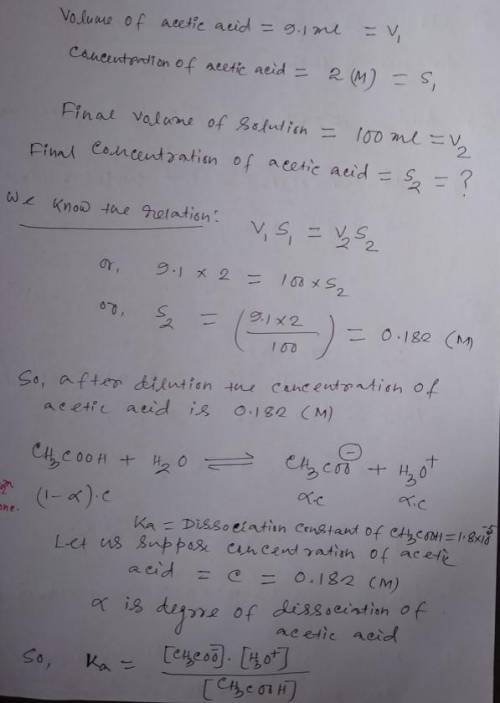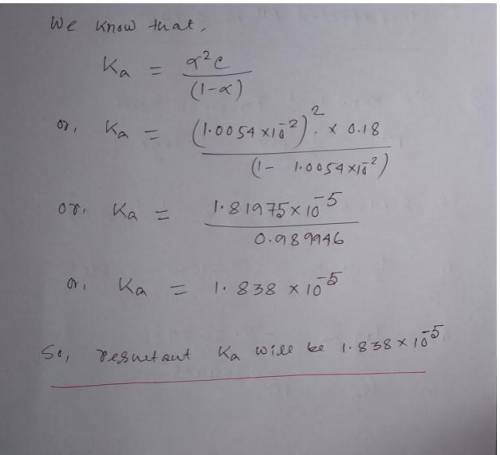
Chemistry, 21.04.2020 23:07 stephaniem0216
In the past, many students have listed that the accidental addition of too much acetic acid contributed greatly to the difference between the experimental value and the accepted value. Suppose that Student A was supposed to make a 0.18 M solution by diluting 9.0 mL of 2.0 Macetic acid to 100.0 mL. The expected pH for this solution is 2.74. The K of acetic acid is 1.8 x 10
a. What would be the expected pH if a Student A accidentally diluted 9.1 mL (instead of 9.0 mL) of the acid to 100 mL?
b. If student A measured the above calculated pH, what would be the resultant K of acetic acid given that they expected the acid to have an initial concentration of 0.18M.

Answers: 3
Another question on Chemistry

Chemistry, 22.06.2019 01:30
Idon't really understand this can you me and show your work.☺☺[ chemistry b] subject [ electron transfer in lonic bonds]grade( 12)
Answers: 1

Chemistry, 23.06.2019 00:30
You are attempting to recrystallize a crude product mixture. you add the appropriate amount of hot solvent and are allowing the solution to slowly cool to room temperature. however, at room temperature no crystals have appeared, which of the following methods should be used to induce crystallization? choose all correct answers. a) place the flask in an ice bath. b) swirl the contents of the flask. c) add a small seed crystal of the desired product. d) scratch the inside of the glassware using a stir rod. it can be multiple choices
Answers: 3

Chemistry, 23.06.2019 03:00
In november 1987, a massive iceberg broke loose from the antartic ice mass and floated free in the ocean. the chunk of ice was estimated to be 98 mi long, 25 mi wide, and 750 ft thick. a typical backyard swimming pool contains about 24,000 gallons of water. how many of these pools could you fill from the water in this iceberg? (assume the iceberg is a rectangular solid of the above dimensions and consists of water only). express answer in scientific notation.
Answers: 1

Chemistry, 23.06.2019 05:00
In 1901, thomas edison invented the nickel-iron battery. the following reaction takes place in the battery. fe(s) + 2 nio(oh)(s) + 2 h2o(l) fe(oh)2(s) + 2 ni(oh)2(aq) how many mole of fe(oh)2, is produced when 4.20 mol fe and 6.70 mol nio(oh) react?
Answers: 3
You know the right answer?
In the past, many students have listed that the accidental addition of too much acetic acid contribu...
Questions



Computers and Technology, 11.12.2019 02:31






Social Studies, 11.12.2019 02:31

Mathematics, 11.12.2019 02:31

Mathematics, 11.12.2019 02:31








Biology, 11.12.2019 02:31






